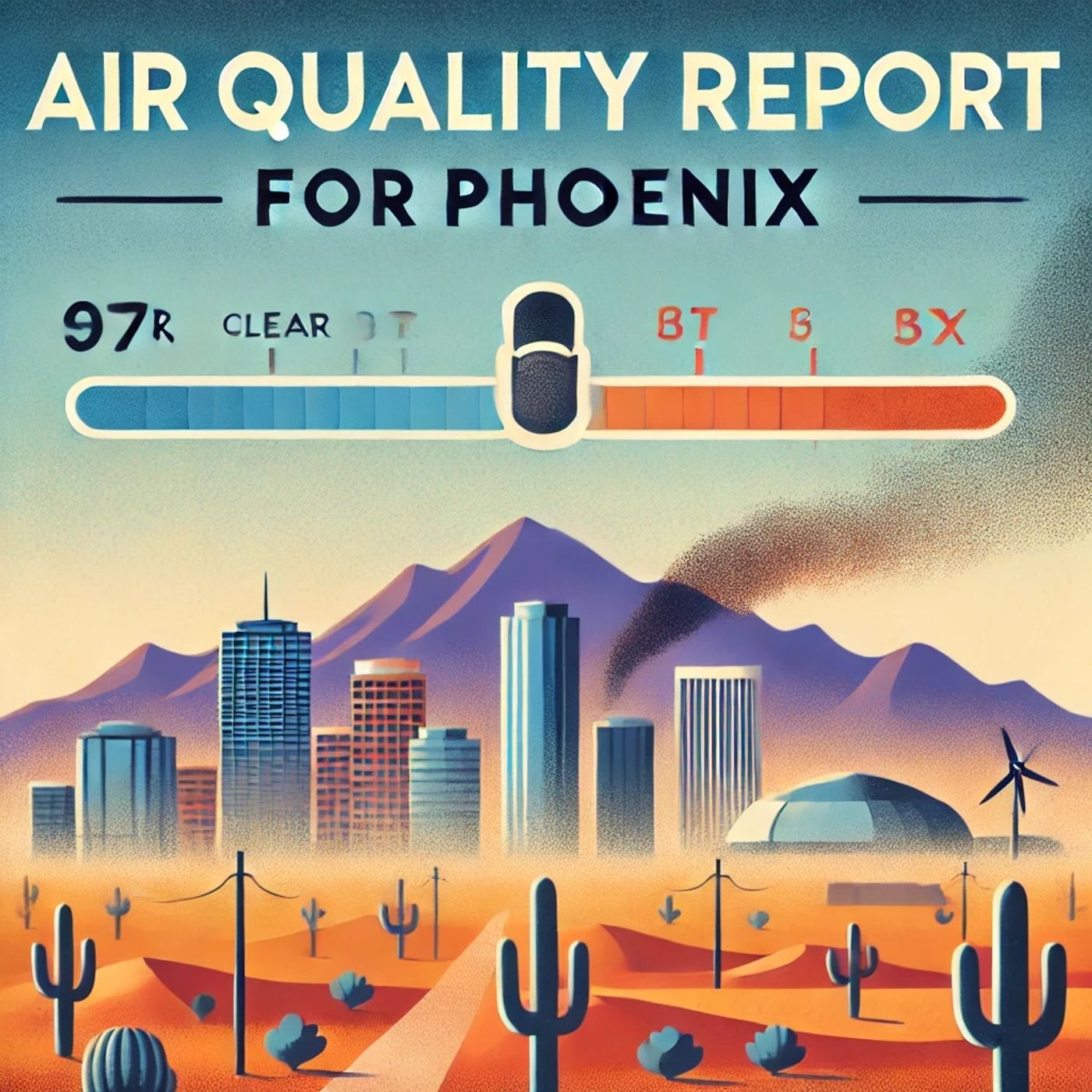Listen "Phoenix Air Quality Presents Moderate Concerns Amid Natural, Man-Made Factors"
Episode Synopsis
Today’s air quality in Phoenix presents a mixed but insightful portrait of environmental conditions influenced by both natural and anthropogenic factors. Situated in the Sonoran Desert, Phoenix is susceptible to unique air quality challenges that can impact the health and well-being of its approximately 1.7 million residents. The primary air quality measures include ground-level ozone, particulate matter, and allergens.First, let’s discuss ground-level ozone, the principal component of smog and a significant air quality concern in Phoenix, especially during the summer months. Ozone levels can rise due to the prevalent high temperatures and strong sunlight, which facilitate photochemical reactions involving pollutants from vehicle emissions, industrial activities, and other sources. Phoenix recorded moderate ozone levels today, primarily influenced by ongoing vehicular traffic and industrial processes. While not immediately hazardous, prolonged exposure to moderate ozone levels can exacerbate respiratory issues, particularly for vulnerable groups such as children, the elderly, and those with pre-existing health conditions.Next, particulate matter, both PM10 and PM2.5, contributes to the city’s air quality profile. PM10, which includes dust and larger particles, is often stirred up from the arid landscape and construction activities. PM2.5, finer particulate matter, tends to result from combustion processes, including vehicle engines and wildfires. Today, particulate matter levels in Phoenix are classified as moderate. This stems from typical urban activity and some residual effects of regional wildfires. Short-term exposure may not pose significant risks to the general population, but sensitive individuals should minimize outdoor activity to avoid potential respiratory irritation or other health effects.Another factor affecting today's air quality is allergens, particularly pollen. Phoenix's desert environment means that pollen from plants like ragweed and grasses can be quite pervasive. Today, pollen levels are moderately high, partly due to seasonal trends and recent weather patterns. Individuals with allergies might experience symptoms such as nasal congestion, sneezing, and itchy eyes, making it advisable for them to take preventive measures, such as using air purifiers and keeping windows closed.Presented together, these elements paint a composite picture of Phoenix’s air quality today. While the levels of ozone, particulate matter, and pollen are not at critical stages, they are significant enough to warrant caution for vulnerable populations. The city's geography and climate contribute to its unique air quality challenges, underscoring the importance of sustainable practices and public awareness to mitigate adverse health effects.In summary, Phoenix’s air quality today can be described as moderate overall. This suggests that while the general population may not face immediate health threats, sensitive groups should be cautious. Understanding these dynamics is crucial for making informed decisions about outdoor activities and health precautions. As always, staying updated through reliable air quality indices and health advisories can help residents better manage the risks associated with air pollution.This content was created in partnership and with the help of Artificial Intelligence AI
More episodes of the podcast Phoenix Air Quality Report - Daily
Phoenix Enjoys Excellent Air Quality Today
23/08/2025
 ZARZA We are Zarza, the prestigious firm behind major projects in information technology.
ZARZA We are Zarza, the prestigious firm behind major projects in information technology.
